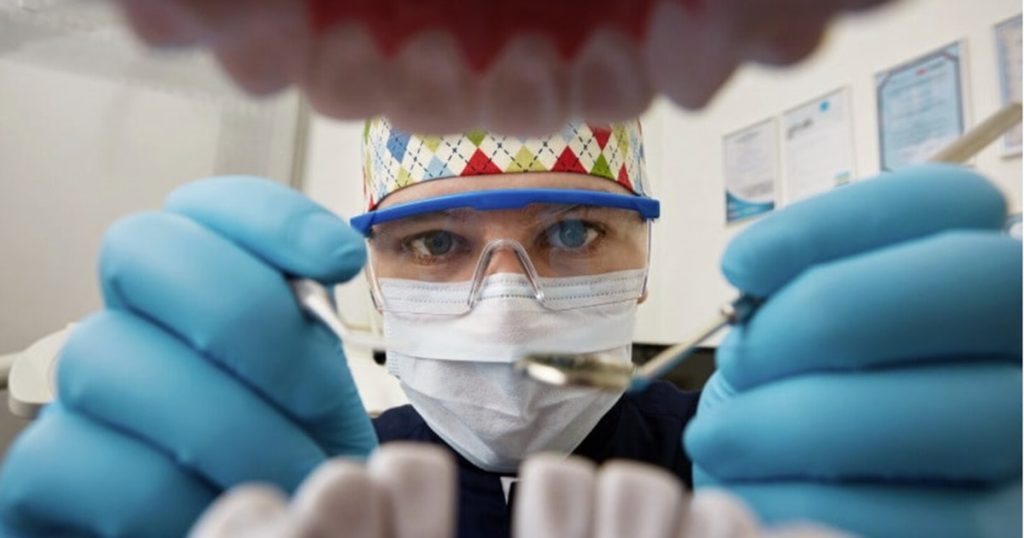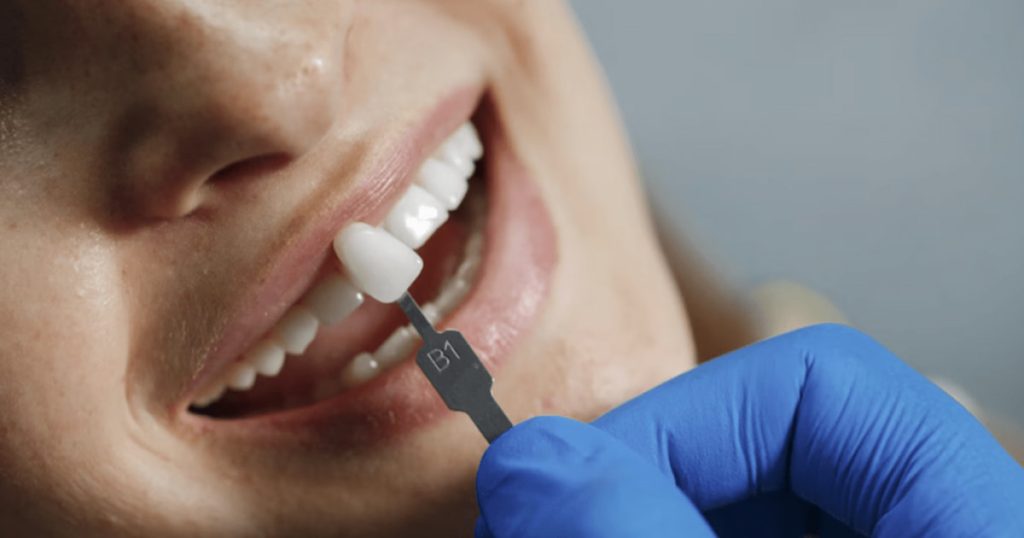There are different types of dental implants and ways to do them, and your dentist will help you choose what’s best for you. In this table, you can see the most common dental implants:
| Dental Implant Type | Explanation |
| Endosteal Implants | Titanium posts are placed into a healthy jawbone to replace one or more teeth. |
| Subperiosteal Implants | A custom metal frame is placed on the jawbone under the gums for those who can’t have traditional implants. |
| Zygomatic Implants | Longer implants anchored in the cheekbone, used for severe upper jaw bone loss. |
| All-on-4 Implants | Four implants support a full arch of teeth, offering a permanent alternative to dentures. |
What Are Dental Implants?
Dental implants are the most reliable long-term solution for missing teeth. They act as artificial roots that are surgically placed into the jawbone, creating a strong foundation for crowns, bridges, or full dentures. Unlike traditional options, implants help preserve jawbone health and feel much more like natural teeth. Whether you’re missing one, several, or all of your teeth, implants can be tailored to your needs, using a single implant with a crown, multiple implants to support a bridge, or full-mouth implants for complete restoration. That’s why so many patients choose dental implants for missing teeth as the preferred option.
Types of Dental Implants
Different dental implants, which can make your smile, eating, and speaking feel natural, include:
1- Endosteal Implants
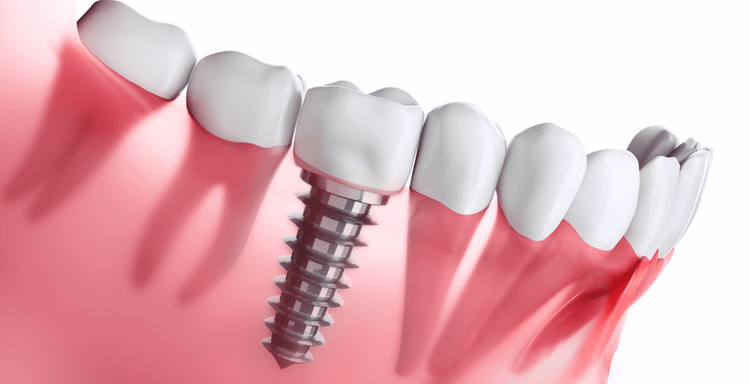
Endosteal implants are the most common type of dental implant. They involve placing a small titanium post into the jawbone, where it acts like an artificial tooth root. After healing, a prosthetic tooth is attached. They’re ideal for people with healthy jawbones and can replace one or more missing teeth, even supporting dentures or bridges.
2- Subperiosteal Implants
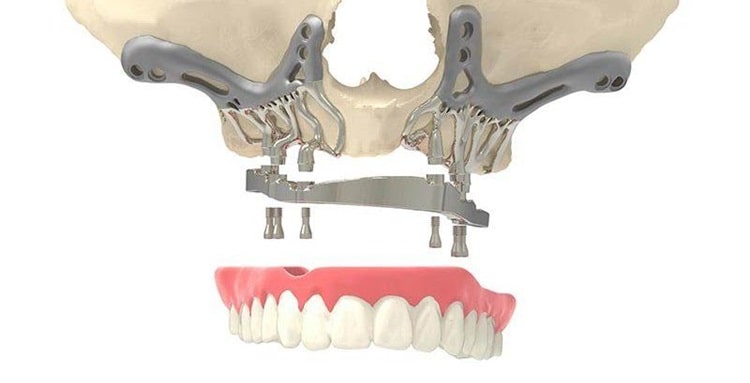
Using a custom-made metal frame, subperiosteal implants are placed on top of the jawbone, under the gum. If you can’t have traditional implants or don’t want bone grafting, they’re ideal for you. The frame holds the artificial tooth in place and is fitted through minor surgery. That’s why it is a less invasive option for those with weaker jawbones.
3- Zygomatic Implants
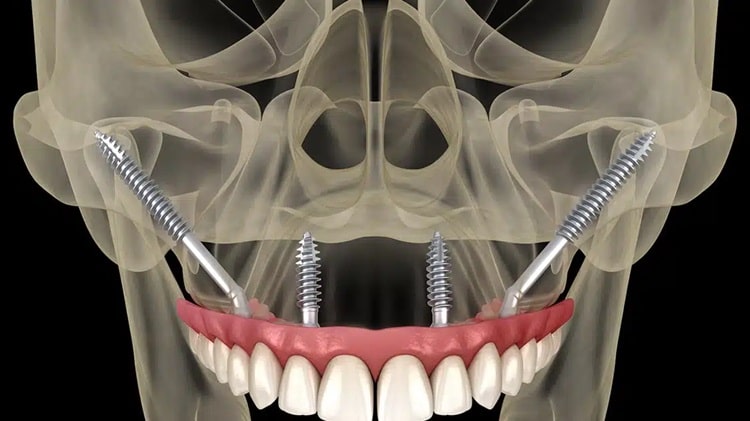
If someone has very little bone in their upper jaw, zygomatic implants can be the best choice. These are longer dental implants that go into the cheekbone instead of the regular jawbone. Doctors use them when normal implants won’t work. Zygomatic implants can hold bridges, a full set of top teeth, or dentures. Even though they are more complicated to put in and cost more, they give a strong and steady solution for people who can’t get regular dental implants.
4- All-on-4 Dental Implants
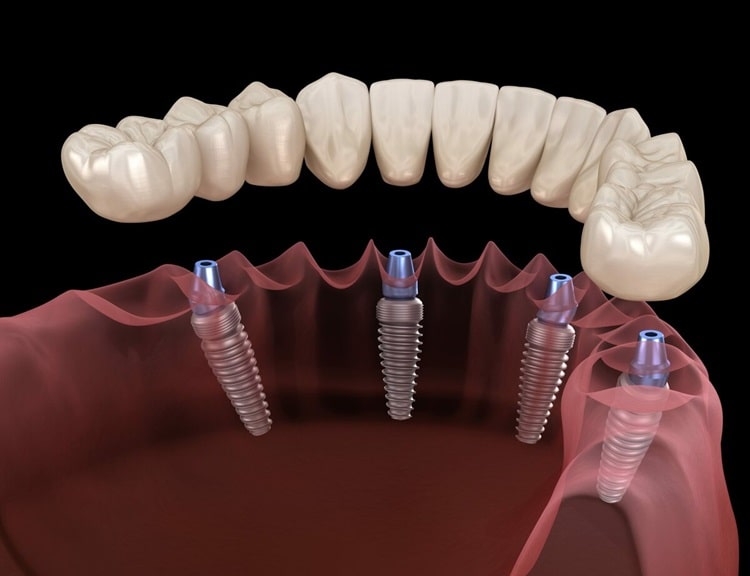
All-on-4 dental implants are a way to replace all of your top or bottom teeth with just four implants on each arch. These four implants act like strong supports for a complete set of new teeth that are fixed in place. This is a good option if you are missing many teeth or want a brand new smile without having to deal with dentures that you take in and out every day. It’s a stable and lasting way to get a full set of teeth again.
Considering dental implants? Get expert advice!
At Woodbridge Smile Centre, our experienced team provides complimentary consultations to discuss your individual needs and help you choose the best implant solution. Whether it’s one tooth or a complete smile makeover, we’re dedicated to supporting you every step of the way.
How to Choose the Right Type of Dental Implant
Deciding which dental implant is best for you depends on a few things: how healthy your mouth is, how strong your jawbone is, how many teeth you’re missing, and how much you want to spend.
If your jawbone is healthy, endosteal implants are often a good choice. If you’ve lost some bone, subperiosteal or zygomatic implants might work better. And if you need to replace all your top or bottom teeth, All-on-4 could be the way to go. Your dentist can guide you on the best implant for your needs. You can also use the table below for a quick overview of which type might suit you:
| Type of Implant | Placement Location | Best For | Pros | Cons | Cost |
| Endosteal Implants | In the jawbone | Patients with healthy jawbones | Most common, high success rate, supports single/multiple teeth | Requires sufficient bone | Lower |
| Subperiosteal Implants | On the jawbone, under the gum | Patients with bone loss who can’t have grafting | No bone graft needed, fits those with poor bone density | More complex procedure, moderate success rate | Moderate |
| Zygomatic Implants | Anchored in the cheekbone | Severe upper jawbone loss | Works when other implants aren’t possible, very stable | Longest recovery, most expensive option | Higher |
| All-on-4 Implants | Four implants in upper/lower jawbone | Replacing a full arch of teeth | Permanent, full smile with fewer implants | Not ideal for those with very low bone density | Moderate to High |
Factors to Consider
Before choosing the right dental implants, consider these factors:
- Type of implant: The size and shape of the tooth being replaced an important factors. For example, replacing one tooth needs a smaller implant than replacing many.
- Dentist’s experience: It’s important that your dentist has done these procedures correctly and safely before. They should have experience with the specific type of implant you’re getting.
- The cost: The price of dental implants can be different depending on the type and the dentist you choose. It’s a good idea to look into and compare prices from different dentists to find the best option.
- Healing time and recovery: Some implants (like zygomatic) require longer healing. Consider how much time you can allow for recovery.
Benefits of Each Implant Type
You should know the benefits of each implant type to choose what’s right for your health and comfort. Understanding the implant’s oral health benefits can also help you see why they’re such a valuable option. Here you can see the benefits of different types of dental implants:
Benefits of Endosteal Implants
These work really well and last a long time. They look natural and can replace one or many teeth, or hold bridges and dentures. If your jawbone is healthy, they are strong and doesn’t usually cause problems.
Benefits of Subperiosteal Implants
These are great if your jawbone isn’t very strong and you don’t want a bone graft. They sit on top of the bone, under the gums, so putting them in is easier. They also tend to cost less and still give a secure hold.
Benefits of Zygomatic Implants
These are best for people with very little bone in their upper jaw. They attach to the cheekbone, so you don’t need bone grafts. They give a strong base for a full set of top teeth. Even though it’s a harder and pricier process, they last and work well when regular implants won’t.
Benefits of All-on-4 Dental Implants
This gives you a whole set of teeth using just four implants on each arch. It’s perfect if you’re missing most or all of your teeth. They feel secure and look natural, without the trouble of taking dentures in and out. It’s a lasting, easy way to get your smile and chewing back in one go.
The Implant Procedure for Different Types
When I understand what’s going on with my body, I feel more relaxed. So, let’s take a look at the procedure for different kinds of dental implants.
For replacing individual or multiple teeth, endosteal implants place a post in the jawbone, followed by a connector and the new tooth. Subperiosteal implants, for a less invasive approach, use a custom frame on the jawbone under the gums, with posts for attaching teeth. When there’s significant bone loss, zygomatic implants go into the cheekbone. For a full arch replacement, All-on-4 uses just four implants to support a complete set of teeth, often with temporary teeth placed on the same day.
Sum up
To get your smile back and make your mouth healthier, you should pick the right dental implant. Now, you are familiar with four main types of implants: Endosteal, Subperiosteal, Zygomatic, and All-on-4. Each one has its own benefits, depending on your jaw, your health, and what you want to achieve.
If you’re a refugee, don’t worry; you’re not alone. At Woodbridge Smile Centre, we proudly provide compassionate, high-quality dental care for refugees in Vaughan. Learn more about our dental care for refugees in Vaughan; We’re ready to help.
FAQs
How do I know what kind of dental implants I have?
The easiest way to know what kind of dental implants you have is to ask the dentist who put them in. They keep track of all the details, like the brand and size. If you can’t reach your dentist, check your old dental papers or X-rays – they might have the info. There are also websites like what implant is that, where you can upload X-rays, and experts can try to guess the implant type.
What is the best type of dental implant to get?
For most people with healthy jaws, endosteal implants are usually the best because they work well and last a long time. But if your jawbone isn’t strong enough or you’ve lost some bone, other types like subperiosteal or zygomatic might be a better fit. In the end, your dentist will look at everything and tell you which implant will give you the best results over time.
What are the 3 types of dental implants?
The main kinds of dental implants are endosteal (screws in the jawbone), subperiosteal (on top of the jawbone under gums), and zygomatic (longer, into the cheekbone for severe bone loss).
Which is better, titanium or zirconia dental implants?
Titanium and zirconia are both good for dental implants. Titanium is strong, lasts long, and has been used successfully for many years. Zirconia is metal-free, white like teeth (so it can look better), and good for people with metal sensitivities. The best one for you depends on what you prefer, how you want it to look, and your health. Your dentist can help you decide.
Not sure which implant type fits your needs? Want to hear more about someone else’s experience? Ask away or share your thoughts in the comments. We love connecting with our readers.





